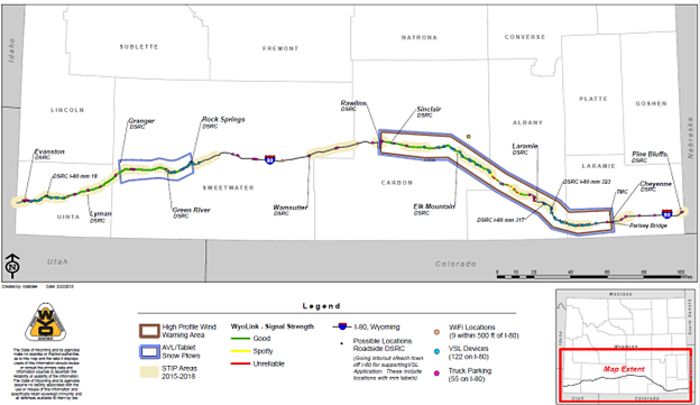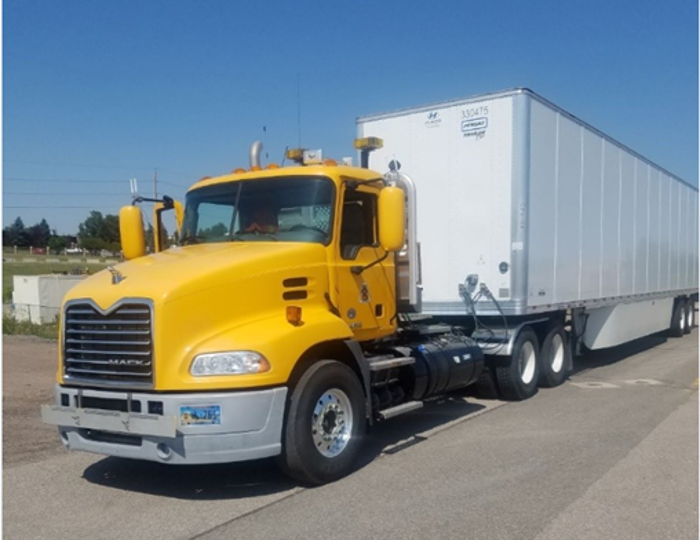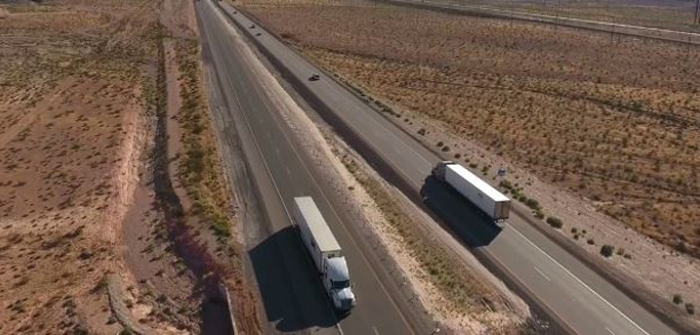The US Department of Transportation (USDOT) has announced an important breakthrough in the placement of communications equipment on the trucks being used in the Wyoming Connected Vehicle Pilot project.
One of three projects in USDOT’s Connected Vehicle Pilot Deployment Program, the Wyoming Pilot, focuses on approximately 400 miles (643.7km) of Interstate I-80, which hosts vehicles from light-duty and passenger cars to commercial trucks and tractor-trailer units.
The pilot project includes equipping semi-trucks with connected vehicle onboard units (OBUs) and antennas to enable communication with other equipped vehicles (V2V) and the infrastructure (V2I). Tractor-trailer units in particular, provided unique challenges to installing this equipment functionally.
For the OBUs to be effective, signals containing messages with road and travel information must be able to move between drivers and fleet managers. The signals travel via dedicated short-range communications (DSRC), and these signals require a clear line of sight for successful reception of messages.
 Antennas are used to send and receive these messages, so if an antenna is ‘hidden’ and does not have a clear path from one antenna to another, then the DSRC signal and the crucial information it carries will be inhibited. A tractor-trailer unit consists of a semi-truck and one or more trailers. During testing, the Wyoming Department of Transportation (WYDOT) found that the box trailers on tractor-trailer units often blocked DSRC signal broadcasts due to antenna placement.
Antennas are used to send and receive these messages, so if an antenna is ‘hidden’ and does not have a clear path from one antenna to another, then the DSRC signal and the crucial information it carries will be inhibited. A tractor-trailer unit consists of a semi-truck and one or more trailers. During testing, the Wyoming Department of Transportation (WYDOT) found that the box trailers on tractor-trailer units often blocked DSRC signal broadcasts due to antenna placement.
The interruptions resulted in DSRC ‘shadows’ behind tractor-trailer units, which are areas in which the DSRC signal was degraded and are usually about 165-492ft (50-150m) in length. This means that forward-collision warnings (FCWs) are rendered ineffective for any light-duty vehicles, such as typical passenger vehicles, that are behind the tractor-trailer unit in the DSRC shadow area.
However, the WYDOT pilot project team has successfully discovered an effective solution to the problem. Through research, testing and hard work alongside vendors and the ITS Professional Capacity Building’s Equipment Loan Program, the team realized that the antenna cable quality, type and design all needed modification to work with the tractor-trailer units.
WYDOT found that low-loss LMR-195 cables had half the DB loss per foot than the previously used LMR-100 cable. Quality of the antenna and components and design were also found to be factors affecting performance. Antenna design, including style, such as shark fin or omni-directional pole, and dB gain and loss associated with an OBU, all contribute to the overall performance and must be factored into the design and installation.
Location or placement of antenna on the tractor/semi to provide line of sight with trailing light-duty vehicles was critical. Several configurations with various antenna types were tested, including high antenna mounts on the tractor cab, cab roof, side mirror mounts, and tractor bumper mount. The final result will ensure that FCW application works, no matter which type of vehicle is behind the tractor-trailer unit. Details of the results will be published in a comprehensive installation plan to be released shortly.






